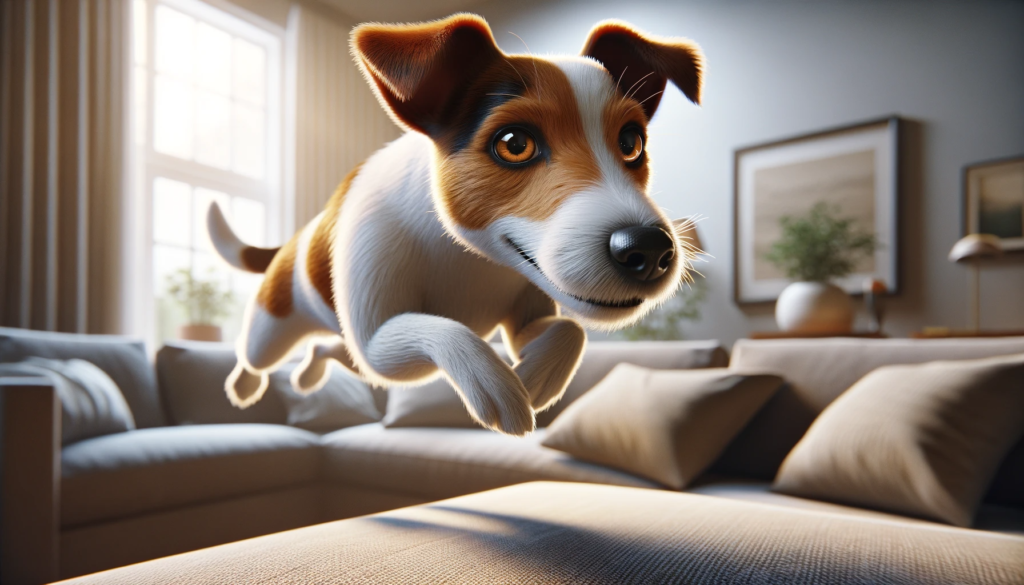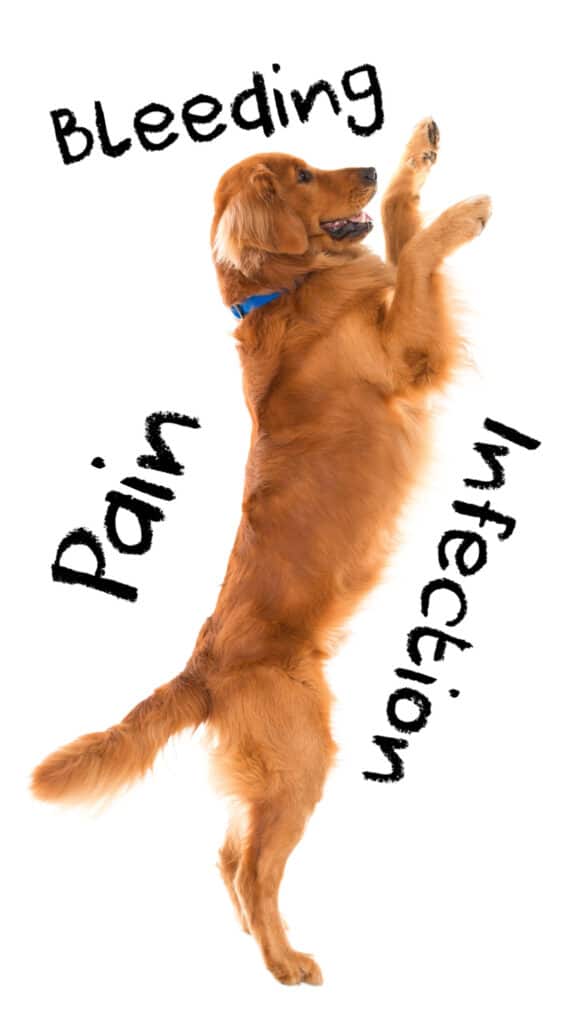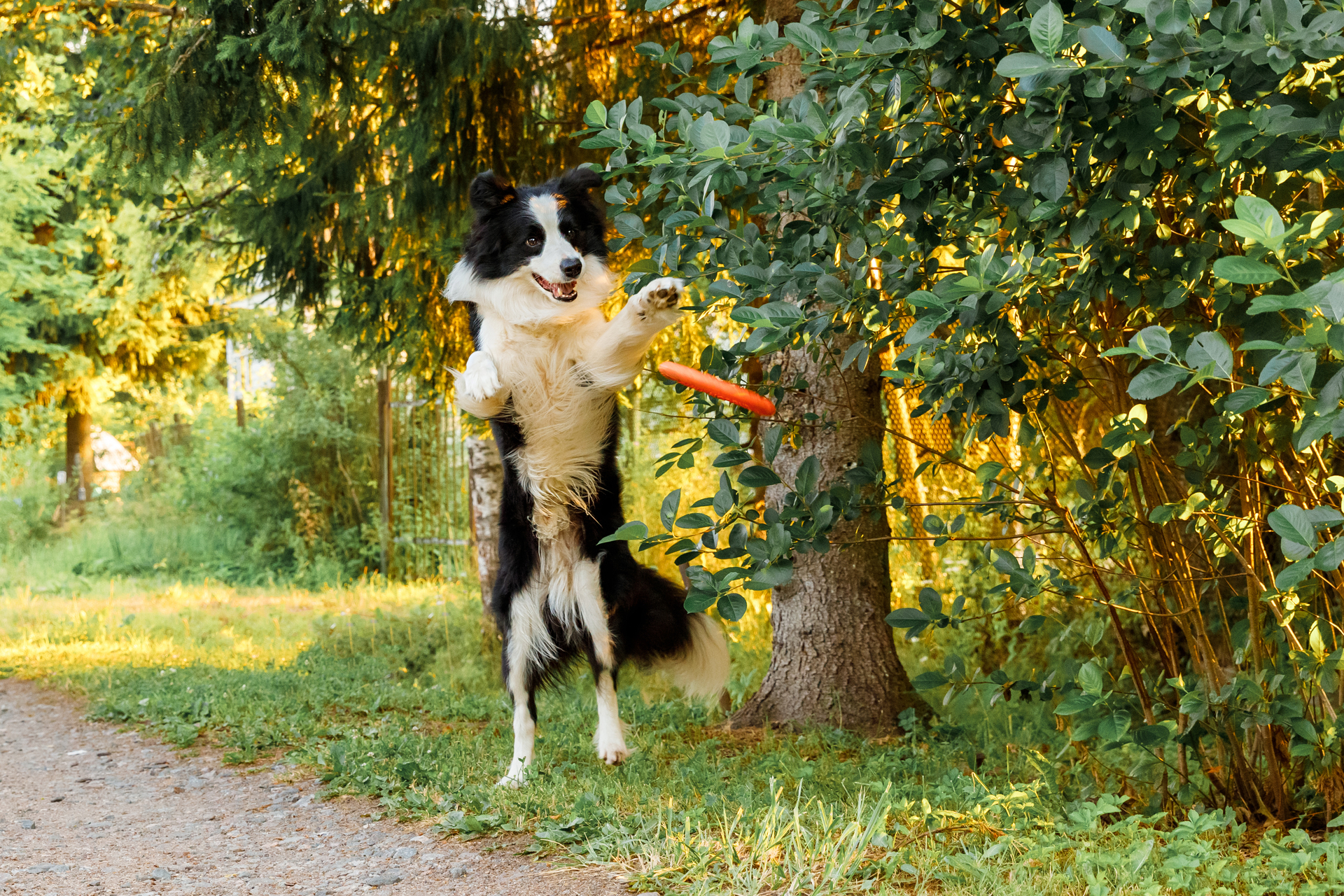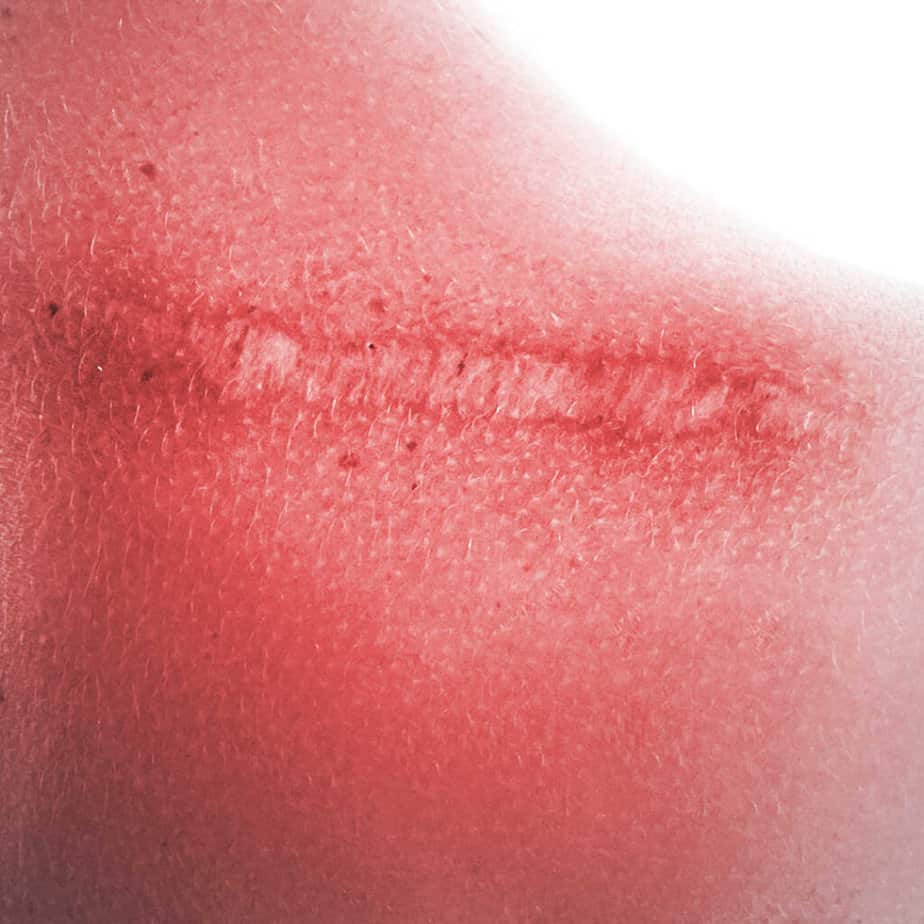As a holistic veterinarian, I understand the concerns that dog parents have when it comes to their furry friend’s health and well-being. One of the most common procedures that our four-legged family members undergo is spaying, which can sometimes cause worry and uncertainty. While it’s essential for your dog to recover safely, there might be instances when your dog jumps after being spayed, despite your best efforts to keep her calm and relaxed. In this article, I’ll briefly go through the spay procedure, explain why it’s crucial to prevent your dog from jumping post-surgery and offer advice on what to do if your dog jumps after being spayed. By the end, you’ll have a better understanding of how to care for your pup and ensure a smooth, healthy recovery.
Most of the time (90%), if your dog jumps around after surgery, she will be fine without any additional treatment. However, it’s important to watch the incision afterward and I’ll show you everything you need to watch for so that you can be confident for a full recovery.

What is The Spay Procedure?
I often get questions from concerned pet parents about spaying their dogs. Spaying, also known as an ovariohysterectomy, is a surgical procedure that involves the removal of a female dog’s ovaries and uterus. This not only prevents unwanted pregnancies but also significantly reduces the risk of certain health problems, such as mammary tumors and uterine infections.
Why Shouldn’t My Dog Jump After Being Spayed?
After your dog undergoes the spay procedure, it’s essential to limit her physical activity, including jumping, for at least 10-14 days. This is because jumping can place strain on the incision site, potentially causing complications such as reopened wounds, bleeding, or even infection. Moreover, excessive movement can lead to internal swelling, which may slow down the healing process.

How Long After Being Spayed Can My Dog Jump?
It’s generally recommended that pet parents wait at least 10-14 days after spaying before allowing their dogs to jump or engage in any high-energy activities. I advise my clients to follow these guidelines strictly for at least 7 days. This period allows the incision site to heal properly and minimizes the risk of complications. However, each dog is different, and the healing process may vary. It’s crucial to consult with your veterinarian and follow their specific recommendations for your dog’s recovery.
Potential Problems With Jumping Right After Being Spayed
When your dog jumps after being spayed, several potential problems may arise. These include:
When your dog jumps after being spayed, several potential problems may arise. These include:
- Reopening of the incision site– Jumping can cause the sutures to loosen or break, resulting in the wound reopening and delaying the healing process.
- Hemorrhage– Excessive movement can lead to internal or external bleeding, which may require emergency medical attention.
- Infection– A reopened wound can introduce bacteria and increase the risk of infection.
- Swelling and pain– Jumping can cause inflammation and discomfort around the incision site, making your dog feel even more uncomfortable.

What Should You Do If Your Dog Jumps After Being Spayed?
If your dog accidentally jumps after being spayed, it’s crucial to take action immediately. First, calmly and gently guide your dog to a resting position and discourage further jumping. Next, examine the incision site for any signs of bleeding, swelling, or discharge. If you notice any abnormalities or if your dog appears to be in pain, contact your veterinarian right away. They will be able to provide guidance on the best course of action and determine if further medical intervention is necessary.

What To Look For If Your Dog Jumped After Being Spayed
If your dog has jumped after being spayed, it’s essential to monitor her closely and look for signs that she might be experiencing complications:
What If Your Dog Is Bleeding Or Oozing From An Incision?
Bleeding or oozing from an incision after your dog jumps can be concerning. If you notice either of these issues, follow these steps:
- Apply gentle pressure with a clean cloth or gauze to stop the bleeding.
- Keep your dog calm and still to minimize further bleeding.
- Call your veterinarian and discuss the situation to determine the best course of action.
What To Do If The Spay Stitches Come Out?
If your dog’s stitches come out after jumping, it’s crucial to take immediate action:
Keep your dog calm and still to prevent further damage.
Gently clean the area with a saline solution or as instructed by your veterinarian.
Contact your veterinarian, as they may need to replace the sutures or provide further care.
How can you stop your dog from jumping after being spayed?
Here are some tips to help prevent your dog from jumping during the recovery period:
- Use a crate or playpen to create a safe, confined space where your dog can rest without being tempted to jump.
- Limit your dog’s access to stairs, furniture, and other areas where she might be inclined to jump.
- Encourage calm, quiet activities such as gentle walks, puzzle toys, or cuddling.
- Utilize a leash when outdoors to control your dog’s movements and prevent jumping.
Can A Dog Jump Off The Couch After Spay?
It’s best to avoid letting your dog jump on or off furniture after being spayed. Instead, gently lift your dog onto and off of the couch or bed, or provide a pet ramp or stairs to assist her.

How To Stop A Dog From Licking A Healing Incision
To prevent your dog from licking the incision site, consider these options:
- Use an Elizabethan collar (also known as an “E-collar” or “cone”) to physically prevent your dog from reaching the incision.
- Apply a bitter-tasting spray or ointment to discourage licking.
- Keep your dog distracted with toys, gentle play, or attention.
- Monitor your dog closely, and gently redirect her if you notice her attempting to lick the area.
What Is The Recovery Time With Dissolvable Stitches?
Dissolvable stitches are designed to gradually dissolve over time, typically within 2-3 weeks. The exact timeframe can vary depending on the type of stitch used and your dog’s individual healing process.

How Long After Spaying Or Neutering Can My Dog Play?
Generally, it’s best to wait at least 10-14 days after spaying or neutering before allowing your dog to engage in high-energy play or exercise. Be sure to consult with your veterinarian, as they may have specific recommendations based on your dog’s unique situation.
As a practicing veterinarian, I understand the concerns that arise when your dog jumps after being spayed. While it’s essential to prevent jumping during the recovery period, accidents can happen. By monitoring your dog closely, following your veterinarian’s advice, and taking appropriate action if complications arise, you can help ensure a smooth and healthy recovery for your beloved canine companion. Remember to be patient and supportive during this time, as your dog will need your love and care more than ever. And don’t hesitate to reach out to your veterinarian if you have any concerns or questions along the way – we’re here to help you and your furry friend navigate this journey together.
FAQ’s
No, you shouldn’t take your pup for a walk for the first 7 days. Then you can take your dog for short, gentle walks after 7 days of recovery. Keep the walks slow and avoid strenuous activity or rough play.
Provide a comfortable, quiet space for your dog to rest and offer a soft, supportive bed. Minimize noise and disruptions in the environment to aid in her comfort. If you think that she is in significant pain, call your vet’s office to ask about the dose of pain meds.
A healing incision should gradually become less red and swollen over time, with no discharge or excessive bleeding. Slight firmness or scabbing along the suture line is normal.
Bonus = Dr. Candy’s Homemade Kong Stuffing Mix For Fast Healing After a Spay Surgery
Making frozen kong-like toys can be a great way to engage your dog’s mind during surgical recovery. And with my holistic approach, we can even boost healing with the right ingredients. In this recipe I’ve included the following 3 healing ingredients:
- Bone Broth – this superfood is packed full of collagen and other connective proteins that are needed to rebuild skin cells. Its also easy for your pup to absorb and contains tons of minerals to support your dog’s immune system. ( Plus….dogs LOVE it! )
- Oatmeal – oatmeal is perfect for creating a long-lasting frozen bone. It holds everything together and helps it stick to the inside of the kong-like-toy. Additionally, it contains two types of fiber that help to support normal bowel movements which can be disrupted by anesthesia drugs. If your dog happens to be allergic to oatmeal I recommend using well cooked, mushy potatoes.
- Spirulina – Spirulina is a green algae that frequently comes in a powder. This bright green superfood is one of the strongest antioxidants you can find. It will help reduce inflammation in internal places where healing is occurring. Spirulina also is packed with vitamin C, which is required to make all skin cells. Its also a great source for essential minerals like calcium and magnesium.
Recipe:
Time needed: 15 minutes
- Gather ingredients and supplies
To prepare a nutritious and delicious frozen stuffed Kong toy for your dog, you’ll need the following ingredients and supplies:
1 Kong toy (choose the appropriate size for your dog)
1 cup oatmeal (plain, unsweetened)
1 cup bone broth (preferably low-sodium and free of onion and garlic)
1 teaspoon spirulina powder**
Optional: dog-friendly fruits, veggies, or treats for added variety - Cook the oatmeal
To prepare the oatmeal, combine the bone broth and filtered water in a 1:1 ratio. Heat the broth mixture to a boil, and pour in your oats. Turn off the heat, cover the pan, and let it soak for 15 minutes. You want the oatmeal to be soft and sticky, so add water if needed.
- Mix the ingredients
In a mixing bowl, combine the cooked broth oatmeal, and spirulina powder. Stir until the spirulina is evenly distributed throughout the mixture. If desired, you can also add small pieces of dog-friendly fruits, veggies, or treats to create a more exciting and varied stuffing. ( Apples and blueberries are perfect examples )
- Stuff the Kong toy
Place a small piece of cling wrap or wax paper over the small hole at the bottom of the Kong toy to prevent leakage. Then, use a spoon or spatula to carefully stuff the oatmeal mixture into the Kong. Make sure to press the mixture down firmly to fill any gaps and ensure the toy is well-stuffed.
- Freeze the stuffed Kong toy
Place the stuffed Kong toy upright in a freezer-safe container or on a tray to keep it stable. Freeze the toy for at least 4 hours or overnight to create a long-lasting, challenging treat for your dog.
- Serve the frozen stuffed Kong toy to your dog
Once the Kong is frozen, remove the cling wrap or wax paper from the bottom hole and present the frozen treat to your dog. Supervise your pet while they enjoy their tasty and healthy stuffed Kong, and be prepared for happy tail wags and contented chewing!
** CAUTION: Spirulina’s beautiful bright green color reminds us that it is full of beneficial phytonutrients. However, this supplement can stain carpets and furniture so be careful where you give it to your dog.
~Dr. Candy

